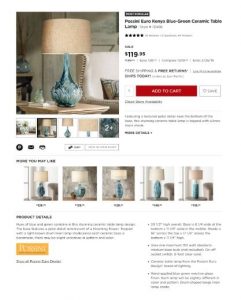In 2020, content is still king. According to Neil Patel, content marketing guru and world-class marketer, the best content will always gain an edge when it comes to the marketing mix. There is doubt that most people are tired and sick of disruptive ads that provide no value whatsoever. They want something they can relate to, original content that is highly valuable and actionable.
If you want to stay ahead of the curve in 2020 and outperform your competitors, you need to learn how to create content specially focused on your potential customers. If your content is excellent, they’ll want to read it and act upon it. As a result, your prospects will engage more with your site, which will drive up your conversion rates and your SEO rankings.
Below, I’ll show you how you can create content your potential customers actually want to read.
Step 1: Create Content with a Purpose
Every single piece of content you write should have a well-established purpose. You need to find out exactly why you want to create a particular type of content. For example, why do you want to write a new blog post or update your page?
Some of the most common content purposes are:
- Educate your audience
- Convert your audience
- Build Brand Recognition
- Drive social engagement
- High quality earned links
- Rank higher in SERPs (Search Engine Results Pages)
Some of the best types of content you can write to earn links are infographics, surveys, guest posts, and expert comments. On the other hand, to rank in SERPs, you want to focus on writing super long articles that include a lot of long-tail and LSI keywords (Latent Semantic Index keywords).
In 2020, ranking high in SERPs is not so much about integrating the right keywords, as it is about being 100% unique and creating content users interact with. Thus, ensure you have a lot of CTAs and anchor links spread throughout your content so that users can drive up the on-page engagement rate.
To educate your audience, you could write an eBook, leaflet, whitepaper, case study, detailed analysis, or even create a webinar. Of course, you should integrate primary and secondary keywords within your blog posts, site content, or any other content that can rank organically. This will help you get a good SEO boost.
Step 2: Study your Audience
The next step in creating high-quality content that converts is to take a closer look at your audience. It would be best if you found out who is most likely to buy from you. What traits do these people have in common? What are their interests? What are their needs? Why do they need your products and services?
This is where researching your audience comes into play. It would help if you used a balanced mix of tools to learn more about what your audience wants and needs. Look at how they behave on social media, on your site, in your email campaigns, on surveys, and advertising platforms. For example, if you discover that your target niche is women between 35 and 55 years of age, it becomes a total waste of time to create content for men or young women.
Next, look at what type of information your audience loves to consume. Do they like infographics, blog posts, or case studies? Are they more interested in educational articles or technical studies? Do they respond in large numbers to your posts on social networks, or they prefer to read a 2000-long blog post on your site?
Ultimately, think of creating content that is useful to your target audience. Put yourself in the shoes of your customers and think of how the content you create can be helpful to them and can enable them to gain access to valuable information. Of course, think of inserting the correct CTAs within the content in order to make the most out of each piece of content and convert the prospects who are ready to move one step further down the funnel.
Step 3: What is your Audience Searching For?
A crucial aspect when creating content for your audience is looking at the actual primary and secondary keywords you have. If you’ve never conducted keyword research for your site and PPC campaigns, doing that now is imperative if you want to become successful online. You can’t just run blindly without using the highest performing keywords out there.
Both primary and secondary keywords are essential when creating content. While primary keywords enable you to focus on those search terms that have tons of traffic online, secondary keywords let you add in additional keywords that are related to the primary keywords and offer additional sources of information.
To top it all, you should also add LSI keywords and long-tail keywords that you find on Quora and on other sites and blogs where your audience is looking for answers. Your final goal should be to answer as many questions your prospects have and to come up with a bespoke solution that solves their problems.
Step 4: What Questions does your Audience Have?
This step is connected to the previous one but desires its own focus. You need to find out exactly what your audience wants and needs in order to know what type of content to create. This research will also help you uncover valuable information about your audience and discover new long-tail keywords to focus on.
You are finding type what types of questions your audience has will enable you to determine what type of content to write. To start off your research, you can go on Quora, Google Search, forums, and private groups on social platforms.
Final Thoughts
Creating high-end quality that your customers want to read revolves around several vital areas.
First, ensure that you conduct enough studies to find the right primary and secondary keywords to use, and you choose the right topics that answer people’s questions. Second, write the type of content that works for your specific niche, ensuring that your content is 100% original and provides value to your prospects.
Do these, and you’ll be able to outsmart your competitors in 2020 and beyond.
Digital & Social Articles on Business 2 Community
(83)







